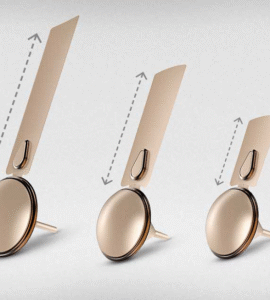 Posted On
Posted On
What is Autism in children and what causes
 Posted On
Posted On
Autism, which is characterized by stereotypical, repetitive, and restricted behavior and difficulties relating to relationships, usually manifests itself in the first years of life. Know the symptoms in children.
Autism is a neuropsychiatric disorder, and it typically appears during the first three years of life and is characterized by:
- Social isolation.
- Difficulties in communicating (language).
- Stereotyped patterns of behavior that is, gestures or expressions that are repeated without variation.
Causes of autism in children
The autism causes are not exactly known, but both genetic and environmental factors likely play a fundamental role in this disease.
Certain genes have been found to be linked to the development of autism. In addition, studies of people with autism show that they have irregularities in various regions of the brain.
Prevalence
This disorder can be presented by individuals of any race and culture and with different socioeconomic levels. However, the incidence in boys is four times higher than in girls.
Worldwide, it is estimated that 5 out of 10,000 people have classic autism. The prevalence increases when children with milder symptoms are taken into account, then increasing the number to 21 out of 10,000 people.
Symptoms of autism in children
Early indicators:
- He does not babble a word at one year of age.
- He does not point to any object until 12 months.
- It does not respond to its name.
- Do not speak words until 16 months, or phrases of two or more words until approximately two years.
- Doesn’t make correct eye contact.
- Aligns toys or other objects excessively.
- He does not smile or show social receptivity.
Late indicators:
- Has no interest in making friends.
- You are unable to start or maintain a conversation.
- He is unimaginative when it comes to playing.
- Shows excessive attachment to certain objects.
Diagnosis of autism in children
The doctor will ask the parents a questionnaire to gather as much information as possible about the child’s behavior and development. Suppose there are suspicions that the child could suffer from this disorder. In that case, they will undergo a comprehensive evaluation, in which a psychologist, neurologist, psychiatrist, and other specialists trained to diagnose children with autism participate.
Early diagnosis is best, and the means are already available to detect this disorder before 24 months of age.
Treatment of autism in childhood
A timely, appropriate and intensive intervention will improve the prognosis of minors with autism. There are currently different educational and behavioral programs to treat autistic children, which include helpful, constructive activities and visual aids.
- Behavioral therapy: consists of behavioral training using behavioral psychology; Desirable performances are encouraged, undesirables are limited. Both parents and educators must be previously trained to be able to perform this therapy with children.
- Special education program: aimed at promoting the development of communicative language and interaction with other people. The schools that the minor attends must have adequate materials and qualified personnel to help the child develop language and help in their social integration.
Forecast
The disease evolution depends on each person; some will need assistance as adults, while others will live independently.
The prognosis will be worse in children whose IQ is low and in those who cannot speak understandably before the age of 5 years.








